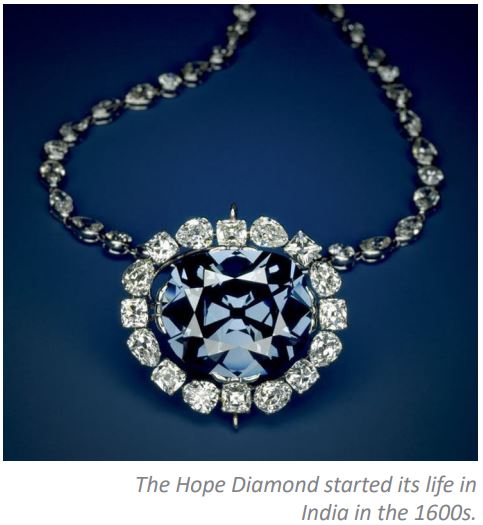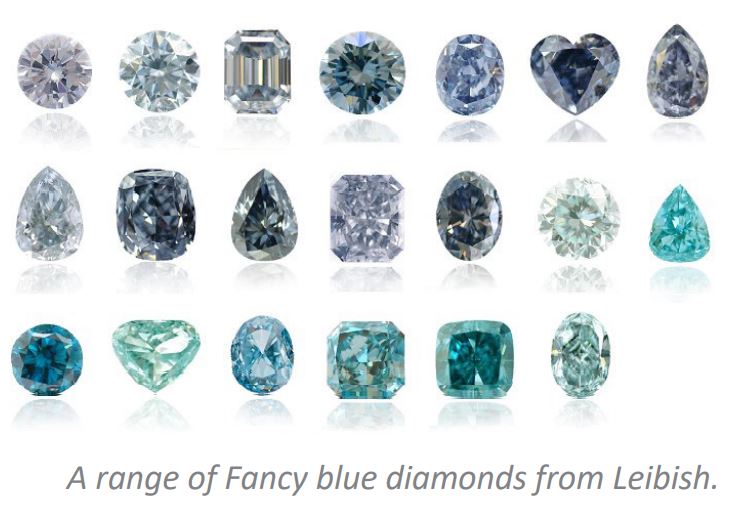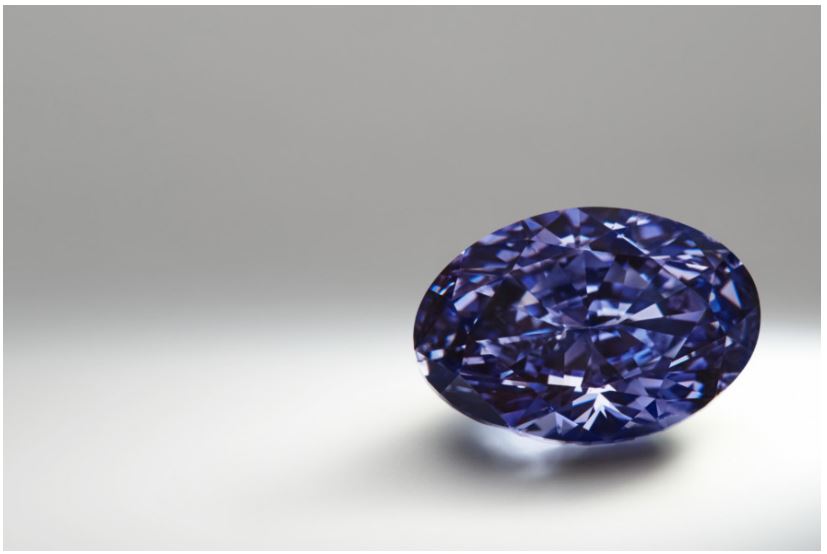The rarest of the coloured diamonds are the blues. A blue diamond is a natural diamond with a noticeable blue tone to it caused by trace amounts of boron in the crystalline lattice structure. Blue diamonds range in hue from light blue to deep, dark saturated blue with all the shades of violet, grey and green in between.

The blues are completely natural (in gemmology as in mental health) and must be untreated to be considered ‘real’. A ‘real’, natural blue diamond is created in the earth and other diamonds that have been artificially treated to gain their blue tones are not considered real even if they are diamonds. A GIA certificate will describe a real blue diamond as ‘natural’. Treated or enhanced stones attract far lower prices than real blue diamonds and there are different colour tones between the two groups of diamonds.

The same four C’s of diamond connoisseurship govern the value of a blue diamond, but colour is considered the most important. There are no known blue diamonds with a completely flawless (F) clarity rating though those with the highest clarity grades are always the most valuable.

The wide range of colours amongst blue diamonds contributes to the difference in price between the hues with the lighter blues and greys usually out-priced by the more valuable deeper hues. Blue diamonds are considered more beautiful when there is no secondary colour present but instead display a single pure blue colour. These pure blue diamonds are Type IIb diamonds, meaning they contain either very few or a complete lack of nitrogen impurities, but do contain boron within the crystal matrix. A Type Ia blue stone would contain a secondary hue and get its colour from the presence of nitrogen atoms in the carbon lattice. These tend to be more blue-grey in colour and this can be unrelated to boron. Violet diamonds are caused by a combination of crystal lattice distortion and a high hydrogen content. Secondary hues can add tint and character to a stone.

The strength and depth of a diamond’s colour is its colour intensity level. This is graded by the GIA and other laboratories on the Fancy colour scale – a list of 27 colour hues that span the full spectrum for coloured gems and diamonds. For the blues the grading scale includes (but is not limited to) Faint Blue, Very Light Blue, Light Blue, Fancy Light Blue, Fancy Blue, Fancy Intense Blue, Fancy Deep Blue and Fancy Vivid Blue. Fancy Dark is also possible in a stone with secondary colour. The famous Hope Diamond is considered a fancy dark blue diamond.
Much is made of the rarity of the pinks, but the blues are amongst the rarest and most expensive diamonds in the world. Only three locations on the planet have unearthed blue diamonds: India’s historically famous Golconda mine, the Cullinan mine near Pretoria in South Africa and, of course, the Argyle mine in Australia. With the closing of Argyle, this leaves South Africa as the principle source of blue diamonds and the mine there is considered past its peak production capacity. In terms of scarcity, blue diamonds have greater rarity than their pink diamond counterparts, constituting less than 0.004% of global production.

The Argyle diamond mine occasionally unearthed violet diamonds which were dizzyingly beautiful. For every 25 million carats of rough that was produced from Argyle, a single polished blue or violet stone was tendered. In the 37 years of Rio Tinto’s Pink Diamond Tenders, only 42 diamonds held a Blue or Violet GIA grading report.